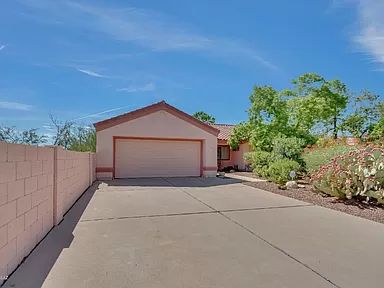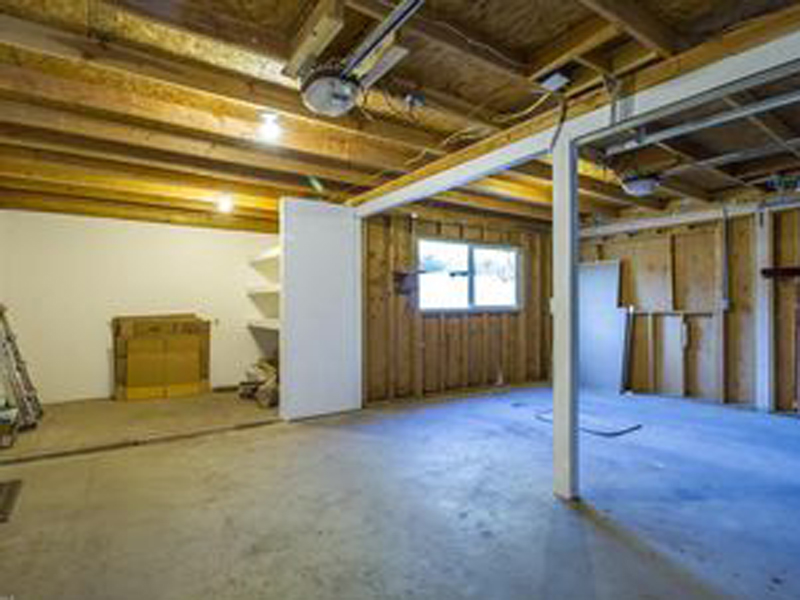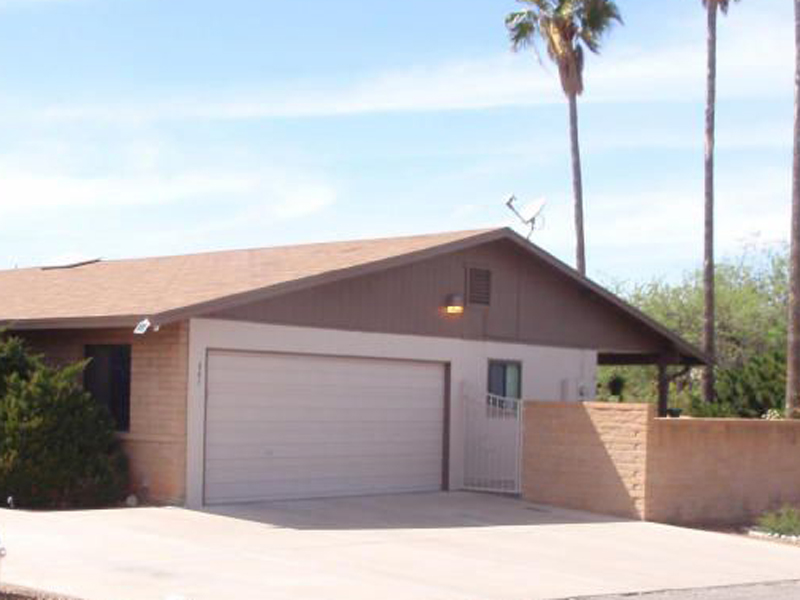Is Your Garage Door Stuck? Below's What to Do First
When your garage door will not open up, begin with these vital safety checks before attempting any repair work. Initially, make sure nobody is standing near the door which cars are clear of the opening. Try to find apparent signs of damages like busted panels, curved tracks, or hanging wires. If you see a snapped spring or badly damaged components, quit immediately and call a professional—-- these repair work need customized tools and competence to take care of securely.

Examine These 6 Things Prior To Calling an Expert
Before presuming you need expensive repair services, go through this fast analysis checklist that fixes most garage door problems:
-
Source of power: Confirm the opener is plugged in and the outlet is working
-
Remote batteries: Replace dead batteries in your push-button control
-
Manual lock: Examine if somebody accidentally engaged the hand-operated lock
-
Obstructions: Seek debris obstructing the door's path or sensors
-
Emergency situation launch: Make sure the red emergency situation cable hasn't been drawn
-
Breaker: Validate the garage circuit hasn't tripped
These simple checks resolve around 70% of garage door concerns without requiring specialist treatment.
10 Usual Factors Your Garage Door Won't Open
Recognizing why your garage door opener isn't functioning assists you select the ideal solution. Here are one of the most constant causes property owners experience:
Dead remote batteries stand for the simplest solution—-- when batteries die, the remote can not send signals to the opener. Power blackouts or tripped breakers reduced electrical power to the electric motor. Broken springtimes avoid the door from lifting effectively and require prompt expert interest. Sensor misalignment causes safety systems to obstruct door procedure. Track blockages quit rollers from moving efficiently. Motor overload triggers automated shutoffs when the opener spots resistance. Limit button troubles perplex the opener concerning door position. Cord damages disrupts the training device. Weather-related issues impact door motion throughout severe temperature levels. Component wear from age slowly minimizes system efficiency.
Problem # 1: Dead Remote Batteries
When your wall surface switch works but your remote doesn't, dead batteries are generally the wrongdoer. The majority of garage door remotes utilize either 3-volt lithium or 12-volt alkaline batteries. Get rid of the back cover of your remote and inspect the battery kind. Replace with fresh batteries and check the remote. If it still doesn't function, you might need to reprogram it to your opener. Consult your opener's guidebook for certain reprogramming guidelines, as the procedure varies by supplier.
Trouble # 2: Power Supply Issues
Garage door power troubles typically stem from loose connections or stumbled circuits. Inspect that the opener is securely connected into its electrical outlet—-- resonance can loosen up links over time. Check the electrical outlet with one more gadget to verify it's functioning. Analyze your home's breaker box for stumbled circuits, specifically if you've experienced storms or power variations. GFCI electrical outlets may have stumbled and need resetting. If the opener has power yet will not react, the issue most likely lies elsewhere in the system.
Issue # 3: Broken or Damaged Springs
Busted garage door springtimes are among one of the most unsafe elements to manage. If you listen to a loud bang from your garage or observe the door feels very hefty when trying to lift manually, a spring has likely snapped. Torsion springtimes run horizontally over the door, while expansion springtimes rest on either side. Never attempt springtime repair work yourself—-- these elements store tremendous tension that can create severe injury or fatality. Specialist replacement commonly costs $150-$300 yet guarantees your safety and security.
Issue # 4: Blocked Safety And Security Sensors
Modern garage doors feature safety sensing units that avoid closure when things are detected. These sensing units can stop the door from opening if they're filthy, misaligned, or blocked by particles. Tidy sensing unit lenses with a soft towel and make certain absolutely nothing blocks the undetectable beam of light between them. Examine that sensing units are correctly aligned—-- most have sign lights that show connection condition. Sensor problems frequently fix with easy cleaning and adjustment.
Trouble # 5: Track Obstructions or Damage
Garage door tracks overview rollers as the door goes up and down. Dust, debris, old grease, or small objects can jam the system. Inspect tracks visually and remove any type of obstructions with a brush or towel. Seek dents, bends, or warping that can restrain smooth operation. Minor track changes are feasible for useful house owners, but considerable damage calls for professional repair service to avoid further problems or security hazards.
Issue # 6: Garage Door Opener Motor Issues
When the garage door motor runs yet the door does not relocate, numerous problems could be responsible. The motor might be overloaded and shutting down as a safety measure. Gear wear, specifically in older systems, can protect against proper procedure. Chain or belt drive troubles affect power transmission. If you listen to unusual grinding, clicking, or humming noises, quit making use of the opener immediately. Electric motor repairs commonly set you back greater than substitute, especially for units over one decade old.
Detailed Do It Yourself Troubleshooting Overview
Follow this organized approach to garage door troubleshooting while focusing on security throughout the procedure:
Action 1: Check the wall surface switch first. If it functions yet the remote doesn't, focus on remote concerns. If neither jobs, examine power supply.
Step 2: Examine the hand-operated launch cable. If it's been pulled, the opener is disengaged from the door. Press the cart back to reconnect.
Step 3: Manually test the door by disengaging the opener and attempting to lift the door by hand. It needs to relocate efficiently and stay in location when half-open.
Step 4: Examine visible elements for damage, paying unique attention to springtimes, cables, and tracks.
Tip 5: Inspect all safety and security features including sensing units, restriction buttons, and auto-reverse functions.
Action 6: Test different controls (remote, wall switch, keypad) to isolate the issue source.
Constantly wear safety glasses and work handwear covers when executing inspections, and never ever attempt repair services on read more springtimes or high-tension elements.
When to Call a Specialist vs. do it yourself Solutions

Recognizing when to call a garage door professional versus trying do it yourself repairs protects both your safety and security and your pocketbook. Take care of these problems yourself: dead remote batteries, power supply troubles, small track cleaning, sensing unit cleaning and positioning, and standard lubrication.
Never ever attempt these repairs yourself: springtime substitute or modification, wire repairs, significant track realignment, electric wiring concerns, opener electric motor substitute, or any type of repair work including high-tension elements. Expert service technicians have actually specialized tools, training, and insurance to take care of harmful repairs safely.
Take into consideration repair work expenses versus substitute expenses, specifically for doors over 15 years old. Modern garage doors offer much better safety and security functions, energy efficiency, and dependability than older versions.
Emergency Garage Door Solutions
When you're stuck with a garage door that will not open up and need prompt gain access to, comply with these emergency situation procedures:
Guidebook Procedure: Pull the red emergency situation release cord to disengage the opener. This permits manual operation however requires appropriate method to stay clear of injury. Raise the door slowly and evenly, making use of leg muscles rather than your back. Many domestic doors evaluate 100-150 extra pounds, making them workable for most adults.
Short-lived Fixes: If the door opens up by hand however will not stay up, prop it open with sawhorses or clamps—-- never ever use your body or automobiles as assistances. For doors that will not close totally, make certain the opening is safeguarded if you should leave.
Emergency situation Solution: Many garage door firms offer 24/7 emergency solution for situations including protection problems, entraped vehicles, or complete system failings. While more expensive than normal solution telephone calls, emergency situation repair services supply instant options when required most.
Safety and security Caution: What NOT to Do
Garage door safety and security calls for understanding unsafe repairs that should never be attempted by homeowners:
Never attempt to fix springtimes—-- they save enough energy to create deadly injuries when they snap or are improperly dealt with. Don't compel a stuck door—-- this can harm the opener, tracks, or door panels, producing much more expensive issues. Prevent bypassing safety features—-- sensing units and auto-reverse systems stop serious injuries and residential or commercial property damage.
Don't neglect unusual sounds—-- grinding, scratching, or banging audios suggest issues that worsen with time. Never ever use the door if cables are torn or damaged—-- the door can drop all of a sudden. Do not attempt electrical repair work unless you're a certified electrician—-- garage door openers utilize both 120V house existing and low-voltage control circuits.

Preventative Upkeep to Avoid Future Troubles
Normal garage door upkeep stops most typical issues and prolongs system life-span considerably:
Regular monthly Tasks: Visual assessment of all parts, testing auto-reverse security features, checking and tightening up hardware, and cleaning tracks and sensing units.
Quarterly Tasks: Lubing all relocating get rid of proper garage door lubricating substance, testing guidebook procedure, and checking weather securing.
Yearly Jobs: Specialist examination and tune-up, springtime adjustment if required, and opener maintenance consisting of belt or chain modification.
Seasonal Tasks: Getting ready for weather condition extremes, examining insulation, and changing opener settings for temperature modifications.
Constant upkeep expenses much less than emergency situation repair work and makes certain trustworthy procedure year-round.
Garage Door Won't Open Up Frequently Asked Questions
Why won't my garage door open with the remote however deals with the wall button?
This normally suggests dead remote batteries, signal disturbance, or the requirement to reprogram the remote. Examine batteries first, after that consult your opener manual for reprogramming guidelines.
Can I by hand open my garage door if the power is out?
Yes, draw the red emergency situation release cable to disengage the opener, then lift the door manually. Be planned for the door's complete weight and lift with proper strategy to avoid injury.
Just how do I know if my garage door springtime is broken?
Indications include a loud bang from the garage, the door sensation exceptionally hefty when lifting manually, noticeable gaps in the springtime coils, or the door just opening a few inches prior to quiting.
Is it safe to utilize my garage door if it will not open up completely?
No, partial operation suggests mechanical troubles that might worsen unexpectedly. Quit making use of the door and have it inspected by an expert to avoid further damage or injury.
What should I do if my garage door opens up but will not shut?
Inspect security sensors for blockages or imbalance, check out the tracks for debris, and evaluate the auto-reverse feature. If these do not address the issue, seek advice from a professional.
How much does it cost to deal with a garage door that will not open?
Prices vary commonly relying on the problem: battery substitute ($5-$10), professional diagnosis ($50-$100), spring substitute ($150-$300), or opener replacement ($200-$500).
Can weather influence my garage door's ability to open up?
Yes, severe cold can thicken lubes and impact steel elements, while warmth can cause growth issues. A lot of issues resolve as temperature levels normalize, yet consistent issues may need professional attention.
Why does my garage door open up a few inches then quit?
This usually indicates damaged springs, restriction button problems, or track obstructions. The opener's safety functions quit procedure when resistance is detected, stopping damages to the electric motor or door.
Get Expert Assist for Complex Concerns
When DIY troubleshooting does not solve your garage door problems, expert service technicians offer the experience and tools needed for risk-free, long-term repair work. Certified professionals detect problems precisely, make use of manufacturer-approved components, and provide warranties on their work.
Specialist solutions consist of: comprehensive system assessments, spring and cable substitute, opener fixing and substitute, track positioning and replacement, electric troubleshooting, and emergency service calls.
What to anticipate: ahead of time pricing, licensed and insured service technicians, same-day service for numerous repairs, and follow-up upkeep suggestions.
Most garage door business provide free estimates for significant fixings and can supply instant options for urgent issues influencing home safety and security or car accessibility.
Obtaining Your Garage Door Working Again
A garage door that will not open does not have to destroy your day or break your budget plan. Start with easy troubleshooting steps like checking power, changing batteries, and examining for noticeable obstructions. Several issues have quick DIY remedies that bring back typical operation within mins.
However, acknowledge when expert assistance is needed—-- specifically for spring-related problems, electrical troubles, or complex mechanical failings. Attempting harmful repair work yourself risks severe injury and usually creates a lot more expensive problems.
Regular upkeep protects against most garage door issues and ensures trustworthy procedure for several years ahead. When problems do occur, address them without delay to avoid more costly repairs and preserve your home's safety and security and benefit. Whether you need a basic battery substitute or full system overhaul, solutions exist to get your garage door functioning smoothly once again.